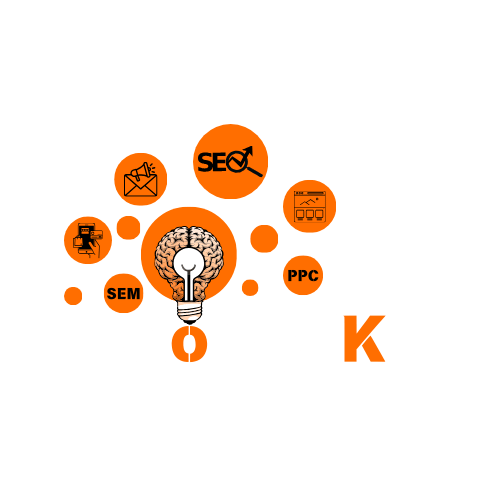Ecommerce Content Marketing Strategy: Product Pages to Blogs
In the competitive world of online retail, having a great product is not enough. You need visibility, trust, and engagement. That’s where a strong content marketing strategy comes in. For e-commerce businesses, a well-planned e-commerce content marketing strategy can turn casual browsers into loyal customers. Whether you’re a startup or an established brand, creating valuable content around your products can help you rank higher on search engines, build authority, and drive more sales.
In this guide, we’ll explore how to build a powerful content marketing strategy for your e-commerce business, from optimizing product pages to publishing engaging blog posts.

Why E-commerce Businesses Need a Content Marketing Strategy
A content marketing strategy is the foundation of digital visibility. It involves creating and distributing content that adds value to your target audience while aligning with your business goals. For e-commerce, this means content that educates, informs, and converts.
Here are some key benefits of a strong e-commerce content marketing strategy:
Improves your search engine ranking
Boosts customer engagement
Builds brand authority
Generates organic traffic
Increases conversion rates
If you’re selling online, your content marketing strategy should include product descriptions, blog articles, social media posts, email newsletters, videos, and more. Each piece should serve a purpose: inform, attract, and convert.
Step 1: Optimize Your Product Pages with Content Marketing Strategy
Most e-commerce brands overlook the value of product page content. Instead of using generic manufacturer descriptions, your content marketing strategy should aim to create detailed, unique, and benefit-driven product content.
Tips for product page optimization:
Use keyword-rich product titles and descriptions.
Include customer FAQs and reviews.
Add video demonstrations or tutorials.
Highlight benefits, not just features.
Integrate internal links to related products or blogs.
A well-crafted content marketing strategy makes your product pages not only more appealing to customers but also more discoverable on search engines.
Step 2: Build Authority with Blog Content
Blogging is essential to a successful e-commerce content marketing strategy. It allows you to rank for a variety of keywords, answer customer queries, and share valuable insights. Blog content can drive traffic, build trust, and even assist in purchase decisions.
Some effective blog topics for e-commerce:
Product comparisons
How-to guides
Customer stories
Industry trends
Gift guides
Example: If you sell skincare products, a blog titled “5 Ways to Protect Your Skin This Summer” supports your products while providing value. A good content marketing strategy links blog content to relevant product pages, boosting both SEO and conversions.
Explore our full Content Marketing Service at GoDigiKit to see how we support brands in building blog strategies that drive traffic and revenue.
Step 3: Use Content to Support the Customer Journey
An effective content marketing strategy maps your content to different stages of the customer journey:
Awareness: Informative blogs, social media posts, infographics
Consideration: Product comparisons, buyer guides, webinars
Decision: Case studies, testimonials, special offers
Retention: Email content, loyalty blogs, tips and tricks
Your e-commerce content marketing strategy should ensure that you’re always delivering the right content at the right time. This increases engagement and lowers churn.
Step 4: Diversify Your Content Formats
To stand out, your content marketing strategy must go beyond blogs and product descriptions. Include videos, infographics, downloadable PDFs, user-generated content, and even AI-driven personalization.
For example:
Create how-to videos on using your products.
Share infographics about your product benefits.
Encourage users to submit reviews or unboxing videos.
You can also read our blog on AI-Powered Marketing Is Changing Customer Experience to understand how AI tools are shaping content creation.
Step 5: Leverage SEO and Keyword Planning
No content marketing strategy is complete without a solid SEO plan. Research the right keywords for your product categories and buyer intent.
For e-commerce content:
Use long-tail keywords like “best running shoes for beginners”
Add semantic keywords in your blog posts and product content
Include alt text in your product images
Optimize meta descriptions and titles
Want to know more about how AI helps? Check out our article AI Content Writer: Future of Writing or Just a Tool?
Step 6: Measure and Improve Your Content Strategy
An efficient content marketing strategy isn’t set and forget. Use tools like Google Analytics, Search Console, and heat maps to see how users engage with your content.
Track these metrics:
Organic traffic
Bounce rate
Conversion rate
Time on page
Social shares
Then refine your approach based on performance. Keep testing new content types and formats to stay ahead of the competition.
Real-World Example: E-commerce and AI in Visual Content
Visual content is becoming central to content marketing strategy, especially for e-commerce. Product images, design layouts, and infographics all play a role. Learn more in our blog AI in Graphic Design: The Challenge or the Future?
Conclusion: Ready to Build a Winning Content Marketing Strategy?
The future of e-commerce lies in content. From optimized product pages to insightful blogs, your e-commerce content marketing strategy can drive traffic, increase engagement, and boost sales—when done right.
If you’re ready to take your content marketing strategy to the next level, GoDigiKit is here to help. We create tailored content plans for businesses of all sizes, combining SEO, design, and marketing strategy to achieve results.
Contact us now for expert help:
